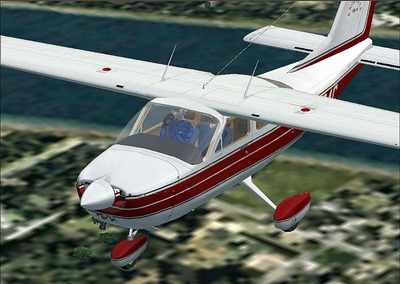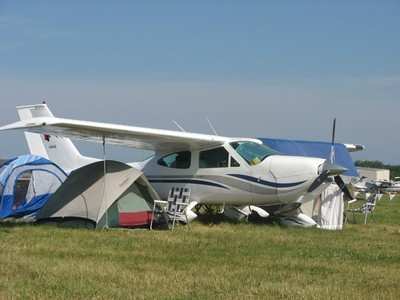AD Stems From A Centurion 210 Carry-Thru Spar Failure in Australia
Cessna Cardinal owners have been expecting the other shoe to drop regarding their aged aircraft carry thru spars, and the FAA did not disappoint. In a move some owners consider an onerous and unnecessary action the FAA issued an Airworthiness directive March 20, 2023 requiring inspection and possible replacement of the main wing carry thru spar in all flavors of the oft-misunderstood, but cultishly beloved Cardinal.

The AD stems from a Centurion 210 carry thru spar failure in Australia resulting in 2 fatalities. The subject aircraft, and the resulting AD involving 177’s, has raised several eyebrows as the aircraft was highly modified and flown in high G severe abuse duty inspecting pipelines. The post-accident forensic investigation found the carry thru spar failed due to fatigue cracking that began at a corrosion pit on the lower spar flange, causing the right wing to depart while in flight, spurring a fleet wide investigation.
That larger effort found the original factory installation put steel straps across the lower carry thru spar flange and glued the headliner to the lower flange as well. Both factors contributed to the corrosion induced fatigue crack that led to the ultimate demise of the aircraft and crew. The resulting fleet inspection has discovered a fair number of centurion spars in need of replacement, an expensive proposition that basically renders the aircraft of no real economic value, leading many owners in the dilemma of scrapping the aircraft or investing a large portion of the market value into repairs.

The FAA astutely surmised that the Cardinal 177’s, sharing a similar wing architecture, may also have concerning yet undiscovered corrosion issues. FAA urged Cessna to publish a Service Letter addressing the issue, which came in two different service letters expanding the inspection area to cover the entirety of the spar. At the time of the Centurion AD FAA also noted the similarities between the sibling aircraft and included concern for the 177 in the NPRM. The public opinions expressed in the comment period of the rule making ranged from outrightly decrying the possibility of an AD on the Cardinals, citing no failures as in the 210’s, to appreciation of the circumstances leading to the 210 failure and the need to at least look at the 177 fleet. Ultimately FAA decided to publish the AD for the 177, without a further comment period for the new rulemaking. This action has raised many an ire as more information has been developed from the inspections occurring under the Service Letter
Instructions. According to the 177 AD 211 spars have been inspected, 120 reports of corrosion, and at least 14 spars removed from service due to corrosion or damage. However, in typical FAA obtusity, clarification of reasons why those failing spars were rejected was frustratingly omitted, leaving the reader wanting information to determine and evaluate the real failure rate directly relevant to the AD concerns. Likewise FAA has chosen to omit information regarding material remaining after corrosion is removed from the spars as the determining factor to accept or reject the spars, rather deferring to the Cessna method of measuring how much material is removed in the repair process. As there is much deviation in each 177 spar from aircraft to aircraft, measuring the amount of material removed is a much less definitive, and admittedly circuitous route, in evaluating the remaining strength of the spar.

Cardinal owners are in a real pickle with this scenario; inspect their spar risking the possibility of permanently grounding their airplane or face very expensive repairs, yet remain boondoggled as to whether their aircraft is “good to go” as is. This is an uncomfortable position to be in.
As a cardinal owner myself I am flabbergasted at the impotent position FAA has assumed in this most important of considerations. FAA has the authority to mandate Cessna to provide affirmative information (or develop their own) which will make the decision to scrap a spar or entire airplane, a black and white proposition, yet they choose to play politics with the lives of those operating the Cardinals and those suffering the fallout of a bad decision.
The Cardinal has not yet suffered a wing failure due to carry thru spar issues, this fact would be of little condolence to the person unlucky enough to change that statistic. However, an AD that stops just short of delivering proper information to make a well-informed decision, muddying the waters regarding what is a safe result, only magnifies the angst Cardinal owners face working thru this dilemma. FAA can and should do better serving the interests of the Cardinal owners, and the public at large, with this rulemaking. The AD is published, it must be complied with, there is no reason for the ambiguity. Gravity is a law that cannot be broken regardless of politics.
 ANN's Daily Aero-Term (04.25.24): Airport Rotating Beacon
ANN's Daily Aero-Term (04.25.24): Airport Rotating Beacon ANN's Daily Aero-Linx (04.25.24)
ANN's Daily Aero-Linx (04.25.24) Klyde Morris (04.22.24)
Klyde Morris (04.22.24) Airborne 04.24.24: INTEGRAL E, Elixir USA, M700 RVSM
Airborne 04.24.24: INTEGRAL E, Elixir USA, M700 RVSM Airborne 04.22.24: Rotor X Worsens, Airport Fees 4 FNB?, USMC Drone Pilot
Airborne 04.22.24: Rotor X Worsens, Airport Fees 4 FNB?, USMC Drone Pilot





